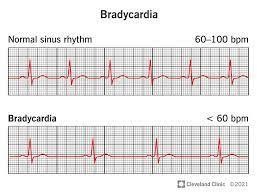A nurse is preparing to administer a new prescription for ampicillin 1.5g IV every 6 hr to a client who has an upper respiratory infection. The client also has a prescription for a sputum specimen for culture and sensitivity. Which of the following actions should the nurse plan to take? (Select all that apply.)
Verify the prescription.
Administer the medication at 1000, 1400, 1800, and 2200.
Assess the client for an allergy to penicillin
Document giving the medications
Obtain a sputum for culture and sensitivity
Correct Answer : A,C,D,E
The nurse should plan to take the following actions:
A.Verify the prescription: Before administering any medication, the nurse must verify the prescription to ensure accuracy, appropriateness, and that it matches the provider's order.
Regarding option B, administering the medication at 1000, 1400, 1800, and 2200 may not be appropriate. The prescription states that ampicillin should be administered every 6 hours. The nurse should administer the medication at equally spaced intervals throughout the day. If the medication is prescribed every 6 hours, the appropriate administration times would be 0600, 1200, 1800, and 2400. However, the question does not provide sufficient information to determine the exact administration times, so option B cannot be definitively selected.
C. Assess the client for an allergy to penicillin: Since ampicillin is a penicillin-class antibiotic, it is essential for the nurse to assess the client for any history of allergies to penicillin or other beta-lactam antibiotics. A penicillin allergy could lead to a severe allergic reaction, so it is crucial to identify any potential allergies before administering the medication.
D. Document giving the medications: After administering the ampicillin, the nurse should document the administration in the client's medical record, including the time, dose, route, and any relevant observations or assessments.
E. Obtain a sputum for culture and sensitivity: The client's new prescription for ampicillin may be related to an infection. To ensure appropriate and effective treatment, obtaining a sputum specimen for culture and sensitivity is necessary. This will help identify the specific bacteria causing the respiratory infection and determine which antibiotics will be most effective in treating it.
Nursing Test Bank
Naxlex Comprehensive Predictor Exams
Related Questions
Correct Answer is D
Explanation
Oxybutynin is an anticholinergic medication commonly used to treat urinary incontinence. One of the adverse effects of anticholinergic medications is the potential for bradycardia, which refers to a slower than normal heart rate. Anticholinergic medications can inhibit the effects of acetylcholine, a neurotransmitter responsible for regulating various bodily functions, including heart rate. Therefore, it is important to assess the client for signs of bradycardia after an unintended higher dose of oxybutynin.
Increased salivation (A) is not an expected adverse effect of oxybutynin. In fact, anticholinergic medications like oxybutynin often have the opposite effect, causing dry mouth and reduced salivation.
Hyperthermia (B) is not a typical adverse effect of oxybutynin. It is more commonly associated with other conditions or medications.
Urinary incontinence (C) is the condition that oxybutynin is intended to treat. It is not an adverse effect but rather the therapeutic effect of the medication.

Correct Answer is C
Explanation
Flumazenil is the antidote for diazepam, which is a benzodiazepine. Flumazenil is a selective antagonist that can reverse the sedative effects of benzodiazepines and is commonly used in cases of benzodiazepine overdose or to reverse sedation after procedures.
Naloxone (A) is the antidote for opioid overdose and would not be appropriate for reversing the effects of diazepam.
Atropine (B) is an anticholinergic medication used to increase heart rate and is not specific to the reversal of diazepam sedation.

Neostigmine (D) is a cholinesterase inhibitor used to reverse the effects of non-depolarizing neuromuscular blocking agents and is not indicated for reversing the effects of diazepam.
Whether you are a student looking to ace your exams or a practicing nurse seeking to enhance your expertise , our nursing education contents will empower you with the confidence and competence to make a difference in the lives of patients and become a respected leader in the healthcare field.
Visit Naxlex, invest in your future and unlock endless possibilities with our unparalleled nursing education contents today
Report Wrong Answer on the Current Question
Do you disagree with the answer? If yes, what is your expected answer? Explain.
Kindly be descriptive with the issue you are facing.
